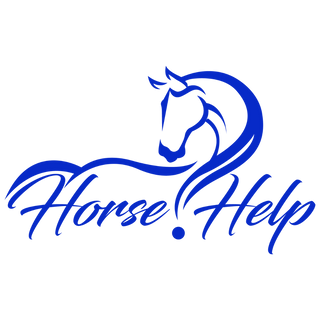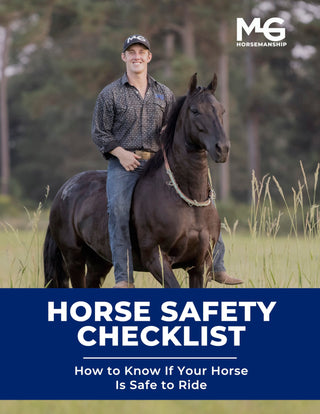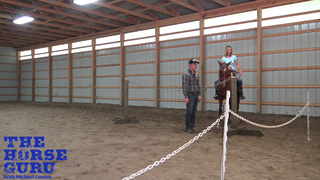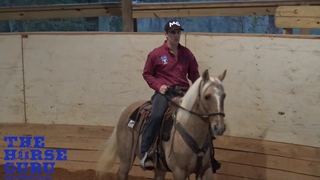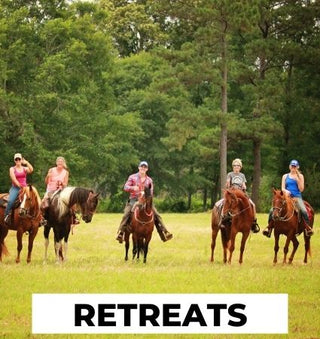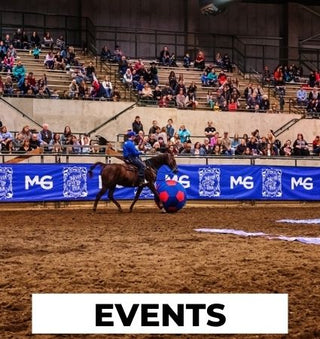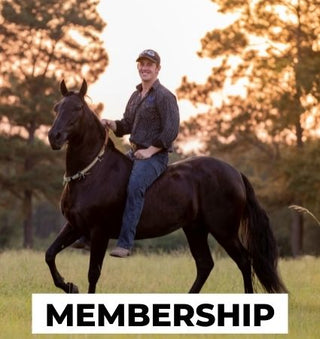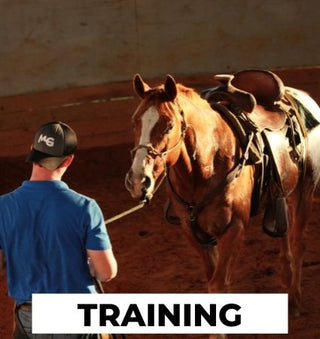Watch the Video Here or continue reading below!
Meet Amy: A Warmblood with a Troubled Past
Amy is a 4-year-old warmblood filly bred for jumping. Despite her potential, she was labeled as dangerous after injuring a couple of trainers. That’s when she was sent to The Horse Guru, Michael Gascon, for colt starting and problem solving. Now in Session 4 of her driving training, Amy is beginning to show real progress.
First Cart, Then Chariot: Why the Setup Matters
In Amy’s previous session, she was introduced to the cart for the first time. However, because of her size, Michael switched to a training chariot, which accommodates larger horses better. This change allows for better movement and comfort while maintaining the same foundational driving principles. Remember, you don’t need a chariot—a properly sized cart will work for most horses.
Overcoming “Shutdown” Behavior with Forward Encouragement
One of Amy’s biggest challenges has been freezing up under pressure, a behavior rooted in over-sensitization to giving to pressure from groundwork and problem-solving exercises. Michael’s approach is to reprogram that mindset, teaching her to drive forward into pressure instead of backing away from it.
With the help of his assistant Walberto, who holds the lines while Michael leads from the front, Amy is encouraged to move forward confidently. This step-by-step method ensures she learns that forward movement is always the right answer when under harness.
Adjusting the Harness for Comfort and Functionality
Proper fit matters, especially for a horse with previous issues. Michael checks and adjusts Amy’s breast collar, ensuring it sits low enough on her chest to avoid restricting airflow or irritating her throat latch. A balanced, even fit across the chest is key to comfort and forward motion.
Tip: Always inspect your horse’s harness for pressure points or poor alignment, especially when introducing new equipment.
The Importance of Constant Contact and Guidance
Throughout the session, one person is always in contact with Amy—either on the lines or from the front. This continuous guidance builds trust and prevents her from feeling alone or unsupported. Whether she’s standing still or in motion, Amy knows she’s not on her own.
Teaching Forward Through Repetition and Positive Pressure
Michael now takes the lines while Walberto walks ahead, giving Amy a clear forward cue. As she hesitates or braces against the shafts, she’s gently encouraged to drive through the discomfort and move forward. The result? Amy begins to free up her movement and trot forward with ease.
Michael explains, “Whenever she gets stuck, we just help her out. The more forward she stays, the better.”
Tailoring Training to the Individual Horse
Not all horses are the same. Some want to bolt; others, like Amy, shut down. Michael shares a valuable horse training tip:
"Do the opposite of what your horse wants to do. If they want to run—slow them down. If they want to stop—get them moving.”
This principle ensures a balanced, well-rounded horse that can think through pressure rather than react to it.
Achieving Calm, Responsive Turns
Amy shows excellent progress by responding to rein pressure and successfully navigating turns in both directions. These tight indoor circles simulate the worst-case scenario, helping her get used to the feeling of the shafts against her sides without panicking.
Once she’s consistent indoors, she’ll be ready to transition to outdoor spaces, where the wider turns make everything easier.
Final Thoughts: From Stuck to Smooth in Just Four Sessions
By the end of this session, Amy demonstrates a clear transformation. She’s moving forward, accepting pressure, and responding calmly to commands. Michael emphasizes the importance of consistent contact, proper equipment, and reading your horse’s behavior.
“Let them go when they want to stop. Get in their way when they want to run. Do the opposite—and you’ll end up with a well-trained horse.”
Ready to Start Driving Your Horse?
This video is part of the “Intro to Driving” series with Michael Gascon, The Horse Guru. If you're working with a green or problem horse, these sessions offer real-time solutions, expert insights, and step-by-step progressions you can apply at home.
